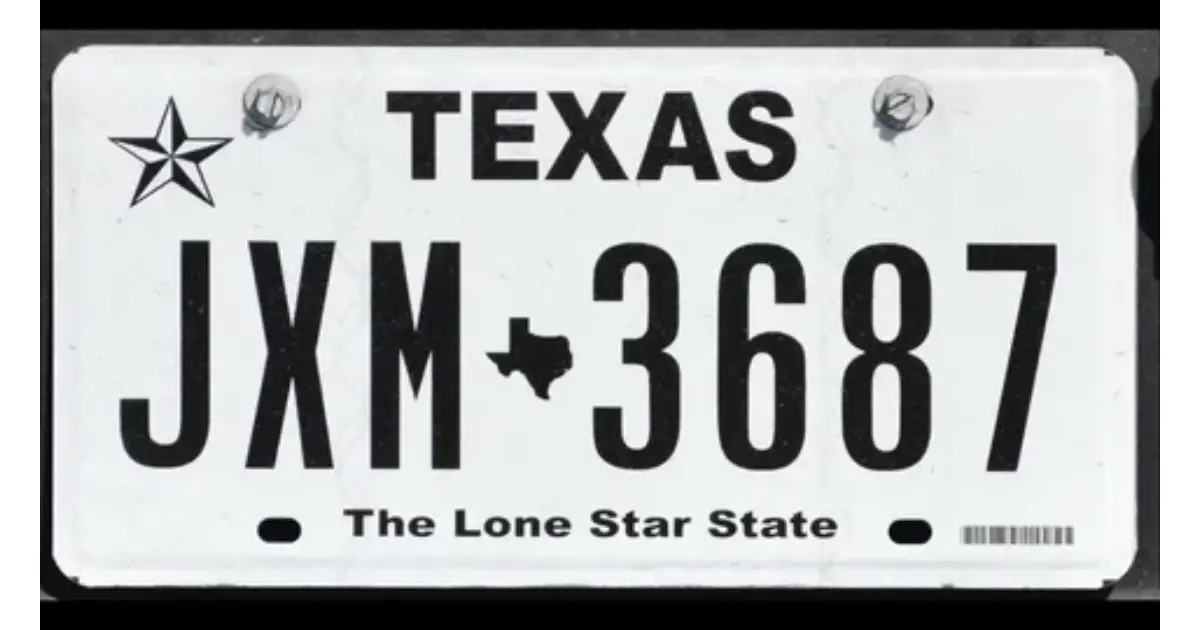In Texas, vehicle owners often wonder whether a front license plate is necessary. This requirement, steeped in state regulations, touches on legal compliance and personal vehicle aesthetics.
Texas law mandates that vehicles display two license plates: one at the front and one at the rear. This rule aims to enhance vehicle identification and law enforcement agencies’ efforts. Understanding this requirement is crucial for avoiding fines and ensuring your vehicle meets state guidelines.
Introduction: The Necessity of Front License Plates in Texas
In the heart of Texas, the debate surrounding the necessity of front license plates on vehicles captures the attention of drivers statewide. This seemingly straightforward aspect of vehicle regulation carries significant weight in legal
safety and enforcement contexts. Texas, known for its vast landscapes and diverse driving conditions, upholds a law that might surprise newcomers and residents alike: the requirement to display a front license plate.
Understanding the Term: Front License Plate in Texas
The term “front license plate” refers specifically to the requirement for vehicles registered in Texas to display two license plates: one at the front and one at the rear of the car.
This requirement is more than a mere formality; it’s a crucial component of Texas vehicle regulation, designed to facilitate the easy identification of vehicles by law enforcement and other authorities. In Texas, as in several states, a front license plate plays a pivotal role in traffic management, law enforcement procedures, and even automated systems like toll collection and red light cameras.
Comprehensive Discussion: Front License Plates in Texas
Legal Requirements and Enforcement

In Texas, the legal framework governing the use of front license plates is clear and straightforward. According to the Texas Transportation Code, vehicles registered in the state must display two license plates: one at the front and another at the rear.
This law applies to passenger vehicles, commercial vehicles, and motorcycles, with specific exemptions provided for certain types of vehicles like trailers and motorcycles, which are only required to display a rear plate.
Local and state law enforcement agencies enforce this requirement. Officers can issue citations to drivers who fail to comply with the front plate mandate. The consequences of not displaying a front license plate can include fines, which vary by jurisdiction but generally serve as a deterrent against non-compliance.
The Role of Front License Plates
The requirement for front license plates serves several critical functions:
- Enhanced Identification: Front plates make it easier for law enforcement and security cameras to identify vehicles involved in crimes, traffic violations, or accidents.
- Traffic Management: Automated systems like toll collection and traffic enforcement cameras rely on clear, unobstructed views of license plates from both directions.
- Public Safety: Front plates contribute to overall public safety and security by facilitating the quick identification of vehicles.
Read Also : How Much Is A Handicapped License Plate In Az
Compliance and Considerations
For Texas drivers, compliance with the front license plate requirement involves more than just mounting the plate on the vehicle. It’s about ensuring the plate is always visible and legible, not obscured by dirt, accessories, or improper mounting techniques. The Texas Department of Motor Vehicles provides guidelines on correctly displaying license plates, including brackets and frames that do not cover any part of the plate.
Drivers moving to Texas or purchasing a new vehicle must also consider this requirement. Upon registering a car in Texas, owners receive two plates and are expected to install them as per state guidelines. Failure to do so can lead to enforcement actions, even if the vehicle is otherwise compliant with state regulations.
Exemptions and Special Cases
While the front license plate requirement is broad, there are exemptions for certain types of vehicles and situations. For example, antique cars and certain commercial vehicles may have different requirements based on their use or design. Understanding these exemptions is crucial for drivers who may fall into these categories to ensure they remain compliant with Texas law.
Table: Key Aspects of Front License Plate Requirement in Texas
| Aspect | Description |
| Legal Basis | Texas Transportation Code mandates front and rear plates |
| Enforcement | Handled by local and state police; fines for non-compliance |
| Function | Aids in vehicle identification, traffic management, and public safety |
| Compliance | Plates must be visible and legible; guidelines provided for proper display |
| Exemptions | Certain vehicles like antiques or specific commercial vehicles |
Summary and Key Takeaways
The requirement for front license plates in Texas is a critical aspect of state vehicle regulations that enhance vehicular identification, aid law enforcement, and promote public safety. Compliance with this mandate is essential for all vehicle owners in Texas, with the law applying to a broad range of vehicles, including passenger and commercial vehicles.
The front license plate facilitates easy identification by law enforcement and automated systems, playing a pivotal role in traffic management and safety measures. Understanding and adhering to this requirement helps avoid potential fines and contributes to a safer driving environment in Texas.
Read More : Behind the Scenes: Jennifer Lawrence’s Life and Career
FAQs
Do all vehicles in Texas need a front license plate?
Yes, most vehicles registered in Texas must have both front and rear license plates, with certain exemptions for specific types of cars.
What are the consequences of not having a front license plate in Texas?
Failure to display a front license plate can result in a fine issued by local or state law enforcement agencies.
Can I be fined for an obscured or improperly mounted front license plate?
You could be fined if the front license plate is not visible or legible due to dirt, accessories, or improper mounting.
Are there any exceptions to the front license plate requirement?
There are exemptions for antique vehicles and certain commercial vehicles, which may have different requirements or be exempt from the front plate mandate.
How should the front license plate be mounted on the vehicle?
The front license plate should be securely mounted at the front of the vehicle in a position where it is visible and legible, following Texas DMV guidelines.
Conclusion
The requirement for a front license plate in Texas is not merely a bureaucratic formality; it is a crucial element of the state’s vehicle regulations to enhance public safety and facilitate law enforcement efforts. Understanding and adhering to this mandate is essential for all vehicle owners.
Texas, as it contributes to efficient traffic management, aids in vehicle identification, and supports the overall safety of road users. Drivers can promote a safer and more regulated driving environment throughout the Lone Star State by recognizing the significance of front license plates and ensuring compliance with state laws.
